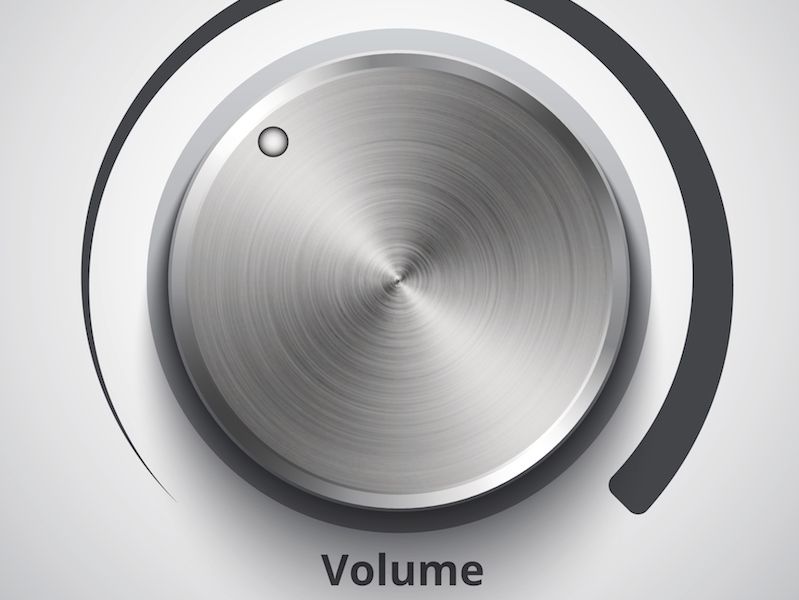
You ever go to the beach and see one of those “Beware of Shark” warnings? It’s not exactly a sign you dismiss. You might even think twice about swimming at all with a sign like that (if the warning is written in big red letters that’s especially true). For some reason, though, it’s more challenging for people to heed warnings concerning their hearing in the same way.
Recent studies have found that millions of individuals disregard warning signs regarding their hearing (there’s no doubt that this is a global concern, though these studies were exclusively conducted in the United Kingdom). Part of the challenge is awareness. It’s rather intuitive to be afraid of sharks. But most people don’t have an overt fear of loud sounds. And the real question is, what’s too loud?
We’re Surrounded by Dangerously Loud Noises
It’s not just the rock concerts or the machine shop floors that present dangers to your ears (not to downplay the hearing risks of these situations). There are potential hazards with many common sounds. That’s because it’s not just the volume of a sound that is dangerous; it’s also the duration. Your hearing can be injured with even low level sounds like dense city traffic if you’re exposed to it for more than two hours at a time.
Read on to find out when sound becomes too loud:
- 30 dB: Everyday conversation would be at this volume level. At this level, there won’t be any limit to how long you can safely be exposed.
- 80 – 85 dB: An air conditioner, dense traffic, and lawn equipment are at this level of sound. This volume will normally become dangerous after two hours of exposure.
- 90 – 95 dB: A motorcycle is a good example of this sound level. This amount of exposure gets dangerous in as little as 50 minutes of exposure.
- 100 dB: An oncoming subway train or a mid-sized sports event are at this sound level (depending on the city, of course). 15 minutes of exposure will be enough to be dangerous at this volume.
- 110 dB: Do you ever crank the volume on your earpods up to max? That’s normally around this volume on most smartphones. This amount of exposure is dangerous after only 5 minutes of exposure.
- 120 dB and over: Instant pain and injury can happen at or above this volume (consider an arena sized sports event or rock show).
What Does 85 dB Sound Like?
Generally, you’re in the danger zone when you’re experiencing any sound 85 dB or above. The issue is that it’s not always clear just how loud 85 dB is. It’s not tangible the way that a shark is tangible.
And hearing warnings often get neglected because of this when the sound environment isn’t loud enough to cause pain, this is particularly true. There are a couple of possible solutions to this:
- Download an app: There isn’t an app that’s going to directly safeguard your ears. But there are a few sound level metering apps. It’s difficult to assess what 85 dB feels like so your hearing can be damaged without you even realizing it. The answer, then, is to have this app open and keep track of the noise levels near you. This will help you develop a sense for when you’re entering the “danger zone” (Or, the app will merely alert you to when things get too noisy).
- Adequate signage and training: This goes for the workplace, in particular. Signage and training can help reinforce the real hazards of hearing loss (and the benefits of hearing protection). Signage could also inform you just how loud your workspace is. Helping employees recognize when hearing protection is recommended or required with appropriate training can be really helpful.
When in Doubt: Protect
Signage and apps aren’t a foolproof solution. So take the time to safeguard your ears if you have any doubt. Noise damage, over a long enough time period, can lead to hearing loss. And it’s easier than ever to injure your ears (it’s a simple matter of listening to your tunes too loudly).
If you’re listening to headphones all day, you should not raise the volume past the mid-mark. If you keep turning it up to hear your music over background sound you need different headphones that can block out noise.
That’s the reason why it’s more essential than ever to identify when loud becomes too loud. And in order to do this, you need to increase your own awareness and knowledge level. It’s not difficult to reduce your exposure or at least wear hearing protection. But you have to know when to do it.
These days that should also be easier. Particularly now that you understand what to be aware of.
Think you might have hearing loss? Make an appointment.